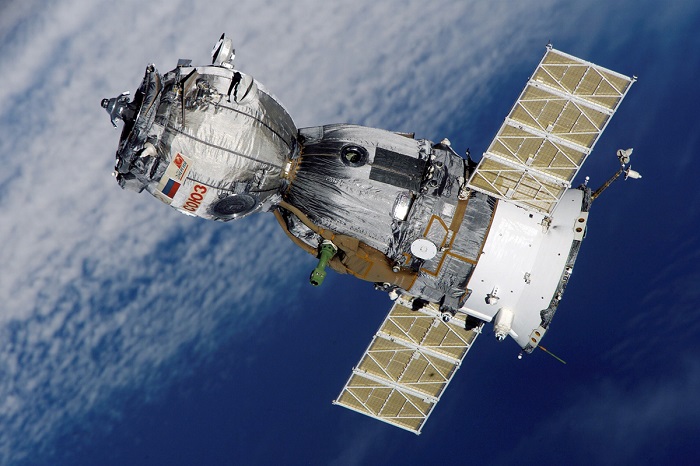EarthTalk®
From the Editors of E – The Environmental Magazine

Some 9,000 satellites already orbit the ionosphere hundreds of miles above Earth’s surface, shedding parts that turn into hurtling “space junk.” Credit: Pixabay.
Dear EarthTalk: Elon Musk plans to put thousands of new satellites into space to blanket Earth with high speed Internet. What are the environmental implications of this? M. C., Atlanta. GA
Putting satellites up into the ionosphere—the layer of our atmosphere extending from 50-600 miles above the surface where a high concentration of ions and free electrons facilitate the reflection of radio waves—isn’t anything new. The Soviets beat us to the punch when they launched the first satellite, Sputnik, in 1957, but these days there are over 9,000 satellites overhead, the majority from U.S. companies and government agencies. But with Elon Musk’s SpaceX poised to launch tens of thousands of new ones in the next few years, many people wonder whether putting all this technology overhead is such a good idea.
One concern is that all this hardware eventually breaks down and shed parts. Peter Greenstreet of the Institute of Physics reports that this so-called “space junk” orbits at some 7.5 kilometers per second—so fast that even the tiniest pieces create a potential hazard for space stations and other man-made or natural objects making the same rounds. Greenstreet adds that space junk falling to Earth’s surface is less of a concern, given that most of it breaks down into tiny pieces due to the heat and friction encountered upon entry to our atmosphere and thus stands little to no chance of hurting any people or property below.
Another environmental issue with satellite proliferation is so-called “sky pollution.” By reflecting the light of the sun, satellites cause streaks of light across the sky where astronomers would prefer darkness for peering into the heavens and where everyday people will be robbed of their own views of a dark sky.
But despite these drawbacks, there are plenty of good reasons to like satellites if you care about the environment. “From the International Space Station (ISS) to hundreds of other observational satellites, remote sensing allows for climate and environmental monitoring,” reports Daisy Gill on Earth.org. “These imaging satellites are an incredible source of data for climate change research, enabling us to see the global changes on the planet that are happening more frequently, and with data freely available for anyone to view and use.” Examples include tracking changing oceanic temperatures, currents and sea level.
Satellites are also key to understanding global and local precipitation and flooding patterns, how wildfires start and spread, the distribution of wildlife populations, and other indicators of environmental health. Satellites are also useful as early warning systems for natural disasters and extreme weather events.
If we can figure out ways to clean up space junk, we can use satellites with less guilt. NASA’s e.DeOrbit project is focusing on seeking out and removing satellite debris in the upper reaches of the ionosphere. Meanwhile, the European Space Agency is hard at work on its own “capture mechanisms” to pick up space debris such as nets, harpoons robotic arms and tentacles. Only time will tell if these technologies can help restore the heavens above—or at least the ionosphere—to a more pristine state.
CONTACTS:
“Satellites: What Harm Can They Do?” iop.org/activity/groups/subject/env/prize/winners/file_65756.pdf;
“Outside Looking In: Satellites in the Climate Crisis,” earth.org/outside-looking-in-satellites-in-the-climate-crisis;
“Space junk and the environment: It’s a very dark picture indeed,” theconversation.com/space-junk-and-the-environment-its-a-very-dark-picture-indeed-2187
EarthTalk® is produced by Roddy Scheer & Doug Moss for the 501(c)3 nonprofit EarthTalk
See more at https://emagazine.com
To donate, visit https://earthtalk.org
Send questions to: question@earthtalk
